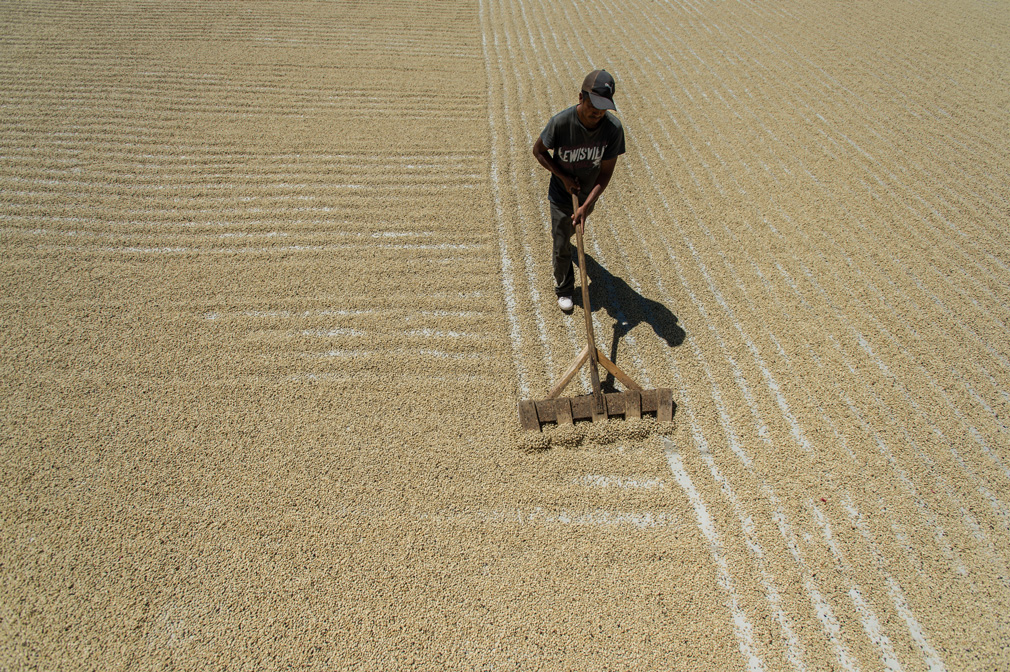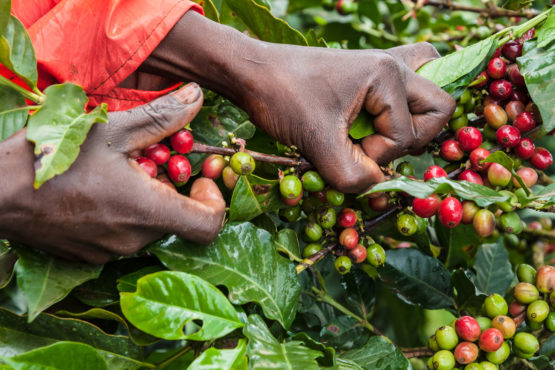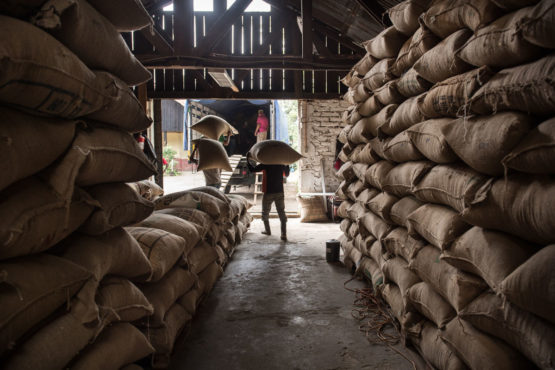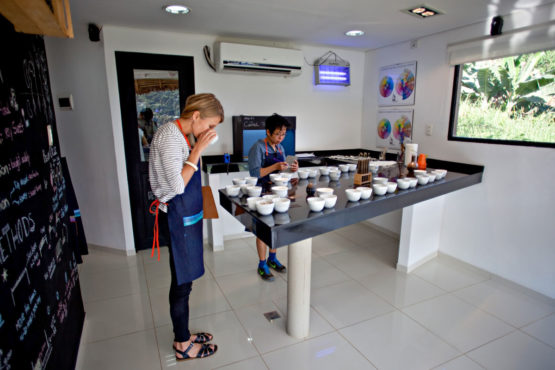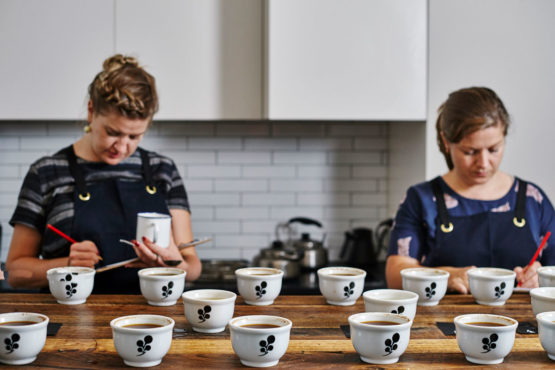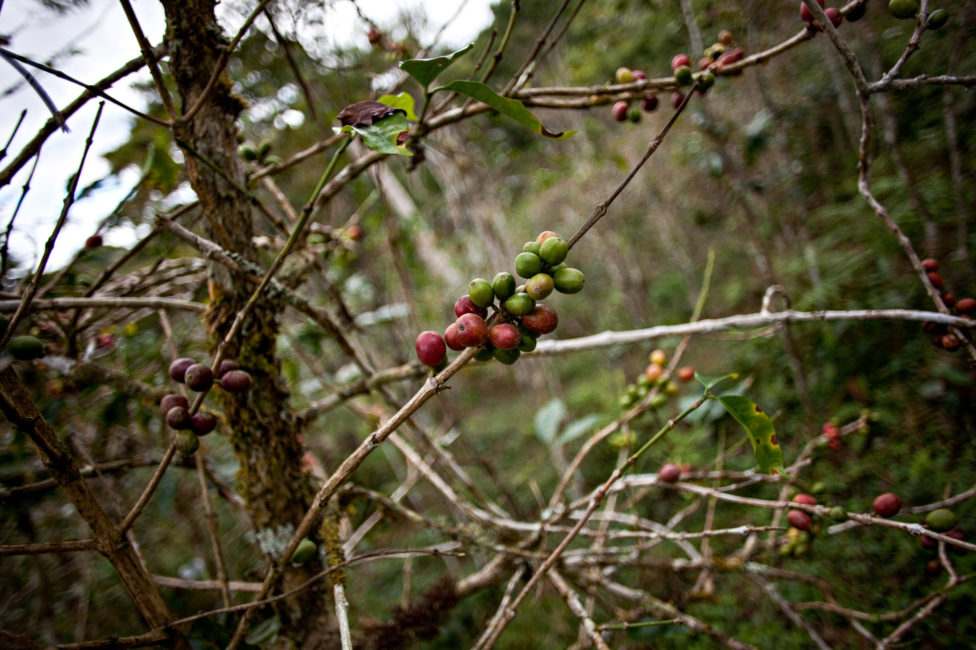Why Transparency is important (and difficult) and what we are doing about it.
As the volatile commodity price for coffee continues to hover at historically low levels, many industry leaders have recognised that we need to increase transparency in the coffee chain. While different parties have taken different approaches to transparency, the ultimate goal is to ensure sustainable prices are paid to coffee-producing communities.
Melbourne Coffee Merchants is joining a growing group of concerned and committed importers and roasters, hoping that by contributing to this conversation we will be part of a movement that holds the industry to a higher standard. In this post, we explore why transparency is important (and why it’s hard), and what we are doing to build a more sustainable future for coffee.
The Problem
Simply put, coffee producers do not make enough money from their coffee, resulting in an unfair and unsustainable supply chain.
This has been driven, largely, by the devastatingly low and sustained C price– currently well below the cost of production in many coffee-producing countries – which puts enormous financial strain on coffee farmers and their families. These low prices, combined with factors like climate change, decreasing yields and increasing costs of production, along with a lack of education and resources, are severely and negatively affecting coffee farmers and jeopardising the future of specialty coffee production. If the coffee community doesn’t work together to address some of these issues, we run the serious risk of losing specialty coffee crops around the world.
Over the last decade, we have seen the specialty coffee industry grow and positively evolve. New economic opportunities have been created for some producers as an increasing number of consumers have begun to appreciate coffee as a differentiated product, and value the impact that things like variety, terroir and processing can have on cup quality. However, many of the market challenges that faced the industry ten years ago remain today; some are even more acute. Climate change is having a real impact on farms, and specialty prices paid to farmers are often still framed against the commodity futures market, which is currently at historically low levels.
The lack of transparency and available information in the coffee supply chain means that many actors in the chain – from the producer to the consumer – have little understanding of who is profiting from coffee, and how much. In some cases, this ambiguity can be capitalised on by different parties along the supply chain – exporters, importers, traders, roasters – who exploit low prices paid to the farmer and/or mill and add hefty margins onto the coffee, while the producer receives no premiums. This is further compounded when roasters falsely represent themselves as purveyors of specialty coffee when, in fact, they are buying lower quality coffee at very low prices, enabling them to undercut competition to gain traction in the café market in Australia and other consuming countries.
Rethinking sustainable prices
In the face of this pricing crisis, industry leaders across the coffee supply chain have recognised that we need to rethink the way that specialty coffee is priced, and in particular move away from using the New York C-Price as a benchmark for all coffee transactions.
What is the New York C Price?
The New York C price is the reserve price for Arabica coffee traded by Intercontinental Exchange (ICE), a large international commodity trader based in NYC. This price assumes that coffee is a homogenous product (i.e. a commodity like wheat, corn or cotton) and is informed by supply and demand economics. Most Arabica is traded either via this Exchange or priced in relation to the current C-market price. The C-price is notoriously volatile and affects all coffee producers globally. It is currently exceptionally low, as a result of speculative trading and an excess of global supply of Arabica. C-price is internationally communicated in USD/lb and refers to coffee that is milled and ready for export.
As an industry, we urgently need to find a new way of determining what appropriate and sustainable coffee prices are. These prices need to provide genuine economic opportunities for producers and real incentives to grow more of the coffees that specialty roasters and consumers want to buy. But how to develop new benchmarks, and effectively communicate to the consumer that an appropriate price has been paid for the coffee, are objectives that the industry is still figuring out.
Without a doubt, the specialty coffee community needs to collectively move towards a more transparent supply chain. Markets work best when there is a lot of information and a lot of opportunity. Increasing the information available gives more power to the producer and the consumers, and can ultimately be used to hold everyone in the supply chain to a higher standard. We need to find a way to communicate transparency to the consumer easily, and in a way that supports the goal of fairer and more sustainable trading practices across the coffee production chain.
Barriers to transparency
Improving transparency may sound straightforward, but unfortunately it’s not. The coffee supply chain is incredibly complex, and there is currently a lack of available data and inherent openness within the chain to support transparency.
Transparency has always been one of our core values at Melbourne Coffee Merchants, and we have strived to be transparent in our practices, with suppliers and customers alike. We are excited to work with people who have an interest in making sure producers are being paid fairly and profitably for their coffee, and are keen to play an active, constructive and positive role in helping to shape a better future for coffee producers.
That said, we do think it’s important to acknowledge the real and relevant barriers to transparency and explore the possible unintended negative consequences for parties across the supply chain. These valid concerns need to be part of the conversation, as without acknowledging and addressing them, many parties along the supply chain may be less likely to adopt transparent practices.
Here we explore some barriers to transparency that we have had to consider and are concerned about. We have thought long and hard about how to tackle some of these challenges and are still navigating many of them.
1. Obstacles to transparency: Competition.
There are potential business concerns that come along with opening our books. We are proud of our business practices and the incredible relationships that we have developed with our producing partners at origin. Opening our books exposes sensitive financial information, which could be used by customers or competitors to put both those practices and relationships at risk. Customers may use this information to negotiate lower prices or challenge the margin that we add to cover our costs and investment. Competitors may approach our producing partners with slightly higher prices for the same coffees, which jeopardises our supply partnerships.
Ultimately, though, we do trust that our supplier and customer relationships are strong enough to withstand this exposure.
2. Obstacles to transparency: They are not our prices to share.
This is one of our biggest concerns. In light of the current conversations around transparent pricing models, we have been asking many of our producing partners if they are willing to have the prices that we pay them published. The response from many has been a resounding no, and many others have concerns, particularly in the case of the prices being available publicly for anyone to access.
The reasons for this are varied. Some have expressed security concerns; they receive extraordinarily high sums for their coffee, which may put them under threat if the information is publicly disclosed and accessed by their neighbouring community. Another more common concern is the fact that these prices would be published out of context and be open to misinterpretation and misuse. A published price does not, for example, show how much coffee was purchased in total by a particular buyer, what the quality of the coffee was, or what the cost of production was. It also doesn’t reflect the longevity of the buying relationship and the mutual long-term commitment and trust that may exist between the producer and the buyer.
If the prices are published publicly, a producer may be forced to deal with confusion and confrontation from their other customers. This may result in a downward pressure on the prices they are able to secure; exactly the opposite effect of what we would be hoping to achieve by publishing them.
3. Obstacles to transparency: Which price do you share?
Among industry leaders, there is a growing movement to publish the FOB, Farmgate, or ‘Return to origin’ prices for either the consumer or industry to reference. These terms can be quite confusing, especially when taken out of context. Here is a simple explanation of these terms and why they can be tricky.
Free On Board (FOB)
This represents the price of the milled coffee, in bags, at the port, when it is ready to ship. These prices are typically reported on export contracts and indicate the pre-export valuation of the coffee. This price only tells part of the economic story and does not necessarily reflect what the producer actually got paid; there may be middle men like millers and exporters who were part of the supply chain and added a margin. FOB is internationally communicated in USD/lb.
Return to Origin (RTO)
Some roasters are also calculating the ‘Return to Origin’ percentage, which is the FOB as a percentage of the final cost of roasted coffee. For example, a 10% RTO means that 10% of the final price of the roasted coffee remained in the origin where the coffee was produced. This is a well-intentioned initiative, but the challenge is that it can be misleading. A higher RTO does not necessarily mean that the producer was paid more, as it depends on the margin added by the roaster. For example, 10% of a higher-priced roasted coffee could represent more money back to the producer than 20% of a lower-priced coffee.
Farmgate
This is the price that a producer directly gets for their coffee. This term can be confusing, as there is no international standard for defining or communicating farmgate pricing, and its definition will depend on different people’s interpretations.
Depending on the supply chain, the farmgate price varies according to whether the coffee is transferred from the hands of the producer as coffee cherries, or green coffee in parchment, or fully milled green coffee. The Farmgate will vary considerably depending on the stage, as there is a certain amount of loss and inherent risk associated with each one. Loss comes from removing the fruit, pulp, humidity, parchment and defects at each stage of the processing. Risk comes from anything that could potentially go wrong during the processing of a coffee, as well as risks in selling/finding a market for the coffee and securing a sustainable price for it.
While none of these figures are straightforward or comprehensive, many people in the industry have agreed that sharing them is a good starting point for demystifying how coffee is traded. Given the urgency of the coffee crisis, we cannot wait until we have perfect figures to share, and so these serve as an important stepping stone. Longer term, we hope that the industry continues to evolve and uncover new and better data to share across the supply chain.
One of the best efforts we have seen towards achieving this goal is the work of Colombian coffee exporters, Azahar, who are investing a significant amount of time and effort into researching the cost of production in different coffee-growing regions of Colombia. Azahar have found that the average cost of production varies significantly from region to region, due to differences in average farm size, yield, necessary inputs etc. By collecting this data, Azahar is identifying the prices they need to pay in order to a) meet the poverty line, b) meet the minimum wage, c) meet the minimum wage and have extra to reinvest in developing the farm. This data provides a useful and accessible benchmark for coffee buyers to determine the farmgate price, and from there the FOB price, which includes Azahar’s margin and processing costs. We would love to see this type of data available in other origins to inform purchasing, but for now the scope is limited.
4. Obstacles to transparency: What do the prices even mean?
The challenge with sharing Farmgate pricing and FOB figures alone is that the dollar amounts do not tell the entire story. They do not indicate the quality, quantity or cost of production for a particular coffee, nor communicate its unique supply chain, which will vary greatly from country to country, region to region, and producer to producer. They also do not account for variations in the cost of living, exchange rate fluctuations, or the costs associated with delivering the coffee, and there is no insight into the communities that grew and processed this coffee, or the types of social initiatives that may be undertaken within those communities by a producer, cooperative or exporter.
Using an example from our own data, here we compare the median, minimum and maximum prices Melbourne Coffee Merchants paid for coffee in 2018.
In 2018, the median FOB purchase price that we paid was US$3.25/lb; more than three times the current commodity price and double the Fair Trade price. The minimum was US$2.10/lb and the maximum was US$30.00/lb.
Without context, these numbers are virtually meaningless. Above we have included a comparison to the commodity price and Fair Trade price – but this is misleading. All of the coffee we purchase is specialty grade, which is arduous to grow and process. Comparing the prices paid for it to commodity or Fair Trade coffee discredits the farmer, as it doesn’t recognise the additional investment, cost, hard work and commitment that is required when a producer decides to grow and/or process coffee intended for the specialty market.
Showing our maximum and minimum price is also meaningless without context. The coffee that was priced at $2.10/lb was sourced from a large-scale producer, who has high yields and economies of scale. We have worked with them for over half a decade and purchase 3+ containers from their mill every year. This was just one lot of many that we bought from the same supplier, with varied cup qualities and price points. It was bought for a specific customer who pre-contracted the coffee and was never featured as a spot offering.
The coffee that was priced at $30/lb also did not feature on our spot list. This was a geisha micro-lot that was 300kg in size. We have committed to buying all of this producer’s Geisha, regardless of quality, since they started to grow it in 2013 (the first lots were just 15kg in size). We purchased this coffee as part of a container made up of other coffees from the same producer, all at varying price points according to the quality, cost of production and variety. We have worked with this producer for over a decade, and precontract all our coffees from them, providing the financial security of a guaranteed buyer.
5. Obstacles to transparency: Using transparency for marketing purposes.
Recently, some roasters have begun communicating to their customers what was paid for the coffee at origin, in an effort to distinguish their buying practices from the competition and contribute to an improved and sustainable livelihood for the coffee producer.
Within the industry, we see power in publishing prices in order to set a higher benchmark for specialty coffee pricing. This is the objective of the Transparency Pledge, an industry-focused initiative that aims to bolster and evolve the transparency movement, and also hold pledgees accountable for their buying practices, with the ultimate aim of ensuring that producers are paid higher prices .
However, for business to consumer marketing, we have reservations about publishing numbers like the FOB price of a coffee, as it so far removed from the cost of a cup of that same coffee in a café setting.If we are looking to appeal to the final consumer, then we have to recognise that there is very little context or understanding of those prices amongst the wider public. (How is a customer expected to understand that US$5/lb is widely considered as a high price for green coffee, but that an AU$4 latte is priced too low?)
C-price, FOB and Farmgate are complicated and changeable figures. They may mean something to us in our specialty coffee industry ‘bubble’ but, even then, they are confusing and take some time to navigate and understand, especially when communicated in different currencies without broader context. We shouldn’t expect our customers to try to be able to unpick and understand these prices.
There is currently no easy way for a customer to understand if the price of a coffee is ‘fair’, or if a sustainable and good price has been paid to the producer. As an industry, we need to make it easy for consumers to make informed purchasing decisions, at a glance. One thing that may help this in the future is verification.Peter Roberts of Emory University notes that“These early stages of the transparency movement rely on trust and the good intentions of those who voluntarily disclose information. However, for a more widespread transparency movement, we must invest in sensible accountability mechanisms. Broader participation is more likely if trusted third parties promote and manage transparency initiatives.”
What we are doing to support the transparency movement
We have spent a lot of time thinking about and discussing how we can participate in the transparency movement in a positive and constructive way that will help move the industry forward, while also protecting the interests of our producing partners and customers, and minimising any potential unintended negative consequences trickling up and down our supply chain. We don’t have all the answers yet, but we do know that we are dedicated to building a more sustainable future for coffee.
We are committing to contributing to the transparency movement in the following ways:
1. In the way we buy coffee.
Firstly, we have published a guide to the way we buy coffee to make clear to our customers how we negotiate and price the coffees we sell. We are proud of the prices we pay; none of the purchases we make are negotiated in relation to the C market, rather our prices are set by our producing partners according to the quality of the coffee and the cost of production.We will endeavour to contextualise those prices by more rigorously recording the cost of producing coffee in a given region (when known and willing to be shared by the producer), and sharing that information with our customers.
We have has been very conscious of the fact that a lot of the information along the coffee supply chain flows in one direction, from producer to consumer. Angela Magnusson sums this up quite eloquently:
“In its simplest form, transparency is about everyone having access to the same level of information so they can make the best decision. To this end, it helps facilitate better business decisions. Armed with this information, you and your valued partners can calibrate your respective understandings of success and sustainability. But until transparency is pursued in a fair and balanced environment, progress on addressing global challenges will not be realized.”
In our capacity as an importer, we intend to not only step up our efforts in gathering information at the beginning of the supply chain to share with our customer, but also to reciprocate by sending information back to our producing partners to help insure they are fully informed and empowered. We already do this in many ways (via purchasing plans, QC reporting and sales reports) but we will work to expand and improve on this information exchange, to ensure that the burden of transparency is shared and that all parties can benefit from it.
2. By being a Data Donor to the Specialty Coffee Transaction Guide and an advocate for its growth and distribution.
In June this year, we committed to providing all of our purchasing information to the Specialty Coffee Transaction Guide, an amazing initiative that has been spearheaded by Chad Trewick and Peter Roberts and their team at Emory University in Atlanta, USA.
The Specialty Coffee Transaction Guide is designed to give producers and buyers a reference for pricing their coffee beyond the C-market price, which does not take into consideration the additional resources, labour and skill that farming specialty-grade coffee requires. The ultimate goal of this project is to dislodge the specialty coffee market from its almost exclusive reliance on commodity indices for price discovery, and to create a new frame of reference.
This project relies on an expanding group of data donors, who provide data from recent coffee contracts. Everything from the FOB price paid to the country of origin, lot size, variety, length of relationship and cup score has been collected from tens of thousands of contracts, making it one of the most expansive and informative price reference tools ever tailored for the specialty coffee industry. The data is anonymised, thereby reducing the risk for any current or potential data donors (and any unintended negative consequences up or downstream), and thus encouraging wider participation. And it is public – anyone can download the guide. If you have not already read the most recent guide, we encourage you to do so! The information is powerful and fascinating, and it’s presented in a way that is informative and easy to digest, providing an accessible and essential context for buyers and sellers.
By donating all of our purchasing data to the study, we are joining a group of dedicated roasters, importers and exporters hoping to contribute to and create a better understanding of specialty coffee pricing, and build an effective tool for producers and buyers to use when negotiating the price of a coffee.
3. By supporting roasters who want to have transparent pricing.
We are willing to share FOB prices with our customers, provided certain conditions are met:
1) Agreement is sought from the producer for this information to be disclosed (and if requested, published). Where we can, we will try to add context to this pricing and make it more meaningful.
2) The customer has committed to purchasing the particular coffee lot at the buying stage (when MCM purchases it from the producer) either in person with us at origin, or after tasting offer samples. This demonstrates the buyer’s commitment to the relationship. We believe the most sustainable model for coffee transactions is when particular roasters support specific suppliers year on year, in committed, reliable and long-term buying partnerships.
4. We are remaining open to continued feedback, conversation, and positive change!
The conversation does not stop here. We are remaining open, and continually looking for ways to improve what we do and how we support our producing partners and customers.
We will continue to talk to our producing partners, and we also want to receive feedback from our roasting community. Are there considerations that we’re missing? How can we help support your business better? We are lucky to work with an engaged and invested group of roasters and we’re looking to this community to help us navigate forward. All insights are valuable, and welcome.
Overall, we are enthusiastic about how the specialty coffee community is evolving and maturing. There are so many great conversations and initiatives taking place right now, and we expect (and desperately hope) that there will be outcomes that positively impact coffee producers. And while the industry is still navigating the right way to positively evolve, it is encouraging to see some very smart and engaged people working on it.
Please don’t hesitate to get in touch if you’d like to talk with us about any of the issues raised here, or to discuss how you’d like to purchase through Melbourne Coffee Merchants.
Further Reading:
On Speciality Coffee Transaction Guide:
See about the Specialty Coffee Transaction Guide
See “Another Giant Step for Transparency with the 2018 Specialty Coffee Transaction Guide”.
See “A New Guideline for Coffee Prices.”
See “How Much Should We Pay for Green Coffee?”
On other transparency initiatives:
See: “Bringing Transparency To Coffee With “The Pledge”
And another importer’s take: Red Fox have done an awesome series of posts on pricing called Paying for Coffee, its Complicated. We particularly like this post, which talks about the questions you should be asking your suppliers and yourself.
